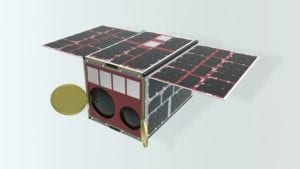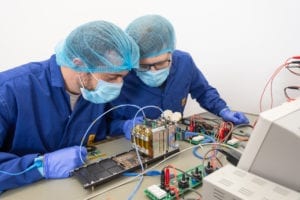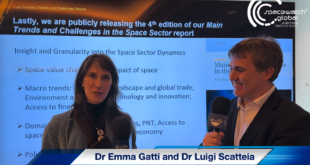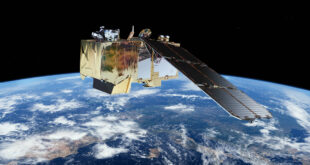Recently we announced here that AImotive, an automotive supplier of automated driving technologies, and C3S, the satellite and space technology provider, will collaborate on a prototype hardware platform for the efficient execution of artificial intelligence (AI) onboard satellites. C3S will adapt AImotive’s aiWare NN hardware acceleration technology in its space electronics platform to enable high performance AI capabilities in small, power-constrained satellites. The results of this collaboration are expected to accelerate the commercialization of a wide range of services for both specialized and mass-market space applications.
To get a better handle on what that really means for space-based embedded systems, SpaceWatch.Globals Alix Paultre reached out to Tony King-Smith of AImotive, to talk about their latest announcement about the collaboration with C3S about implementing self-driving car technology on the aerospace platforms.
Hi Tony, welcome aboard!

Thanks for having me, Alix. Great to join you. Yeah, the key story here is that we’re taking AImotive automotive technology for AI, and we’re working with C3S, who recognize this technology would be pretty interesting for the work. They’re doing satellite platforms for a whole host of applications, from agriculture to asteroid mining, to who knows what. They could recognize the combination of the skills was excellent for them.
So, actually this is not that they’re enabling AI and other platforms through some type of Cloud-Edge hybrid, this is actually using the technology within the satellite to enable its functionalities.
That’s correct. Space, for many years, has been using technology from military and also now increasingly from automotive, in order to add more of the latest technology to their platforms. Space is just too specialized for people to do devices just for space use. What’s happened over the last few years in automotive is, with the rise of the use of AI for autonomous vehicles has been pretty dramatic.
The devices that are coming out now for AI for automotive use, have a lot of characteristics that also make them ideally suited for spacecraft. Like working over an extended temperature range. They’re designed for very high reliability and robustness and a lot of redundancy. And they’re certified in the automotive world for very high levels of reliability, and all of these are great characteristics for a spacecraft platform.
Well, that makes a lot of sense, Tony, because automotive is arguably, after military and aerospace platforms, the most demanding environment, and actually, in fair use often exceeds the specifications, as anybody who’s left a cassette, in the old-timey days, in a glove box could tell you.

Absolutely, it’s an extreme environment in automotive, particularly for temperature. It’s also, people don’t realize it, but it’s actually very power-constrained and thermal constrained, which are all familiar things for the space industry. But also, when you look at the reliability aspects, in some ways they are actually more demanding than even aerospace. And for years, I’ve worked in all of these from space to aviation, now in automotive, and the difference is that, whereas in spacecraft and aviation, when you’re detecting things going wrong, you’ve usually got a reasonable amount of time to do something about it, at least seconds, if not tens of seconds.
In automotive, on the other hand, if something’s going wrong, you may have only fractions of a second in order to make a lifesaving decision. So, the demands on reliability have never been greater when you’re talking about AI taking over, in what is now a life-critical environment in a car. And this huge surge in know-how, on how to make something that is both cost effective and power effective, but also there’s very high levels of reliability and robustness, is why automotive technology, particularly, in the AI side is now creating so much interest in other sectors, and space is a great example of that.
Now, let’s say we’re looking at it in a big picture sense. What are some of the cascading benefits to the other systems and other clients? How would that also benefit their functionalities and their applications?

Well, the big thing about this study and the work that we’re doing with C3S, it’s all about getting greater autonomy into the spacecraft platform. Historically, spacecraft have relied very much for intelligence on the ground. They gathered the raw sensor data, but then they send it down to the ground. The ground does all the analysis and decision making and sends the commands back up. That’s limiting in a number of ways, particularly in low earth orbit where your communications with the down-links is variable, but also it consumes a lot of bandwidth.
When you’re looking at some of the latest generation imaging sensors, for example, they’re generating huge amounts of data. You just don’t have that sort of bandwidth available to you. Also, when you’re looking at nanosats and these small platforms, they’re very constrained in the power budget and so on, they have. So, the knock-on effects of what we’re doing here is, is using AI to get the satellite to be more autonomous, it’s making decisions rather than relying on the ground.
That means it can be much more efficient when it’s got the communications and bandwidth to the ground to only communicate stuff that matters. So, that changes the whole way that that system is working. Also, when these networks are talking to each other, then the ability of satellites to have much more intelligence when they’re in the cluster. That is another way in which this will move forward the whole concept of satellites working together, particularly in some of these lower orbits or in bigger clusters.
But the other thing we’re studying is, it’s making the platform itself more efficient, but when you’ve got large inputs, sensors, like images, there’s a lot of data kicking around. One of the things we’re studying is using the AI to only store what we need to store. That means that the limited storage in the spacecraft, we can make much better use of it. That saves not only the cost in terms of needing less storage, but also power and everything else. So, all of these are factors that are influenced by this work.
I can imagine, Tony, because essentially those are also some of the core arguments behind artificial intelligence in edge computing, in the internet of things here on earth, because those same issues of power and bandwidth. And I mean, primarily at that level for cost and the connection and through the cellular network, as it were, but the whole aspect of putting the power at the point of application, you’ve added the additional layer with, when you start thinking about clusters of spacecraft, like Starlink and such, that’s another layer to artificial intelligence and edge computing, the ability of those intelligence systems to work together at the edge. And I think that’s a fascinating aspect about what you’re doing as far as the satellite clusters.
Yeah, absolutely. This moving of intelligence to the edges is a fascinating area. I think this, if you talk about bigger picture, there’s this eternal cycle between central and distributed, to central and distributed, it’s been going on for decades.
The revenge of Thin Client.

Absolutely. Absolutely. So, nothing is ever stable, but I think that there is a lot more interest, ironically, the more powerful the central processors get, the more you need the edge processors to do their bit, and getting intelligence in there is the way to go. And I think, that’s resulting in people looking at AI in a much broader sense than simply being emulating the brain. We’ve moved on from that, for a start, we’ve downgraded its specification, to being actually just a great way of searching data quickly.
People are increasingly looking at AI as a new form of compression, of data compression through AI-based abstraction. Now, this is a hugely powerful concept and it really works in so many different areas. The great thing about being driven by the automotive space is that automotive, in this context, is extreme because as I said earlier, it has a life aspect to it. So, that makes it also very, very demanding in it has to work correctly.
Right. I get you, Tony, because it’s human critical systems, anything where people touch, like medical. Luckily the hospital is a controlled environment, but one of the things that I wanted to ask you about all of this, Tony, is since it is in the large scope, Edge-computing enablement, what are some of the other application spaces outside of space and automotive? I mean, for example, advanced robotics, there are a lot of places now where smart Edge computing can really make an impact.
It’s a favorite topic of mine, actually. I mean, Edge and intelligence in it can go robotics absolutely, and AI is already being used extensively there, but one of the things that rattles the cage for of a lot of people, is that it isn’t absolutely, necessarily as deterministic as traditional algorithms. So, therefore this sense of autonomy has some fuzzy edges around it. And so, by tackling the high reliability and making it trustworthy, we can deploy it in lots of areas. This is why people are looking at it for natural disasters, for example, and robotics, absolutely.
But you’re also looking at, in terms of real-time security management, of detecting behaviors real-time, and being able to act much, much faster than any central system can do. So, I think AI is finding its way into pretty much every application area I can think of, from IoT through to industrial. Generally, it’s, actually now, I think going to start influencing the whole concept of systems design, of what the intelligence is. And part of the term, is also, is this idea of machine learning. The fact that the system now can actually learn in a structured way and safely. And so, there’s a lot that I think is now opening up as we start putting AI at the edge.
Agreed, agreed. So, Tony, I don’t want to have this run too long for our audience, will be encouraged to listen due to its brevity and information density, but do you have some final words for our audience before we let you go?
Well, I think that this collaboration, and AImotive is absolutely an automotive technology company, their collaboration with a space technology provider, like C3S, shows that the automotive technology is moving in a whole new direction now, in all sorts of ways. And this is a great example of seeing how technology in one sector can propagate rapidly into many, many others, and this is a great example of that.
I agree with you completely, Tony, this was a great talk and I came away with a lot, so I know our audience will as well. Thanks for your time. I really appreciate it.
My pleasure. Great speaking with you.
For more information visit aimotive.com





